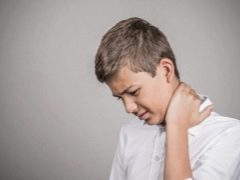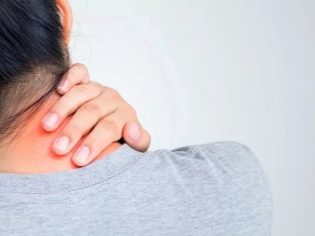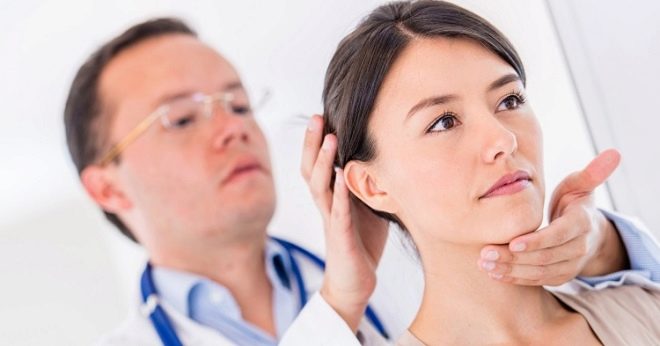Psychosomatics of neck problems in children and adults
Neck pain, tension, limited mobility can make life difficult. A person at different ages experiences insecurity, lethargy, if deprived of the opportunity to freely turn his head, look around. Neck pains sometimes appear suddenly, and at first glance they have nothing to do with any diseases. In this case, talking about psychosomatic problems with the neck. We will tell about them in more detail.
General information
The neck is a very important part of the body. Inside it passes the trachea, esophagus, larynx, cervical spine with a part of the spinal cord, in the neck is the thyroid gland, lymph nodes and numerous blood vessels. The neck provides the mobility of the head, protects all the many important organs inside. Given the multifunctionality of the neck, its diseases may also be different.
All problems with the neck in medicine are conventionally divided into superficial and deep. To the surface can be attributed to various rashes, boil: carbuncles, boils, papilloma. These include inflammation of the lymph nodes located in this part of the body. Depth problems include clips, muscle tension, inflammation of muscle tissue (myositis), as well as problems with vertebrae, nerve endings in the intervertebral space (osteochondrosis, injuries).
The most painful and difficult to cure are considered to be deep problems, when the mobility of the neck is disturbed due to muscle disease, nerve pinchedness, changes in the vertebrae. Symptoms of cervical problems are numerous, but such signs as a tense neck, inflamed lymph nodes are most often manifested. A person with a sore neck is very easy to isolate visually from the crowd - his shoulders are unnaturally raised, he complains that he has a headache and a neck pain, he turns his whole body to look right or left.
Causes of diseases of the neck can be different: viruses, bacteria, hypothermia and reduced immunity, trauma, salt deposition in the vertebrae, comorbidities. Psychosomatic causes of pain are not excluded.
When ailment is psychosomatic?
With the appearance of pain in the neck, you should definitely visit a doctor (general practitioner - adults or pediatrician - children). It is important to try to establish the true cause and an accurate diagnosis. However, sometimes the examination does not show good reasons for pain, muscle clamping or sudden inflammation of the lymph nodes. Then the doctors say that the reason is not established, and therefore, with a high probability, it can be just psychogenic (caused by certain stresses, experiences, psychological and mental state).
Psychosomatic pains in the neck are also talked about when they occur frequently without the presence of an established disease. Psychosomatic pains are poorly amenable to treatment with conventional traditional medicines, physiotherapy.
Often, people who regularly encounter such pains claim that pain syndrome is directly related to some specific events: it begins to hurt after a quarrel with home, before an exam or an important event.
The development of psychosomatic pain in the neck is caused by impaired blood circulation of one or another of its parts.The blood flow is disrupted after the work of the nervous system is disturbed by prolonged stress, and the muscles are in a tense state for too long. The doctor may advise you to visit a psychotherapist or psychologist to try to establish the true cause of the experiences of an adult or child, which leads to excessive tension in the neck.
Psychosomatic causes
At the physiological level, the neck connects the head and the body, and at the level of the psychology of disease, it is the place of the spiritual and the material. When the neck hurts for no apparent medical reason, psychosomatic experts believe that a person has a serious internal conflict between his desires and common sense. It does not hurt the neck of those who are accustomed to do either what the heart tells him, or what logic and rational thinking suggest. That is, a person does not set himself a choice, and therefore successfully avoids clamping, pain, inflammation.
The neck itself is a symbol of the flexibility of thinking and behavior. If flexibility is lost at the physical level (there is no opportunity to look back, it is impossible to look around, up or down), then for an experienced therapist this is a signal that you do not have internal mobility.
Long years of observation of patients with chronic idiopathic pain in the neck have shown psychoanalysts that stubborn people are most often subject to neck problems. Not just persistent, but pathologically stubborn, to persuade whom, to make you look at events or people from a different point of view, from a different angle, is not possible.
They feel internal stress, anxiety due to the understanding of the need to look around, to assess the situation, but the principles do not allow them to do so. There is an internal conflict, which leads to the fact that the neck does not turn, there is a spasm, a clamp.
Psychosomatic pains in the neck (frequent attacks of myositis) suffer those who are afraid to look around and see what is behind them (people who are afraid of being judged behind their back, are afraid of public opinion, censure, disapproval). They usually prefer to remain part of the crowd, do everything like everyone else, do not stand out. If there is a situation in which it is impossible to get lost in the crowd, a sharp pain in the neck occurs, which limits its turns and thus protects the person from having to look back and see reality.
The left side of the neck symbolizes privacy. If the pain is on the left, it is worth looking for the cause in the family, relationships with relatives, friends, inside yourself. The right side is a symbol of the social side of human life. The pains and the clamp on the right are a signal of an internal conflict because of feelings about work, study, career, self-expression in a profession or other activity, in communication with the world and people inhabiting it.
Cervical osteochondrosis
Dysfunction of the cervical vertebrae and discs between them can affect people of different ages, but is more common in adolescents and adults. At the psychosomatic level, long-term stress affects the disruption of the work of the vertebrae, in which the muscles holding the spinal column in its cervical region in an upright position are strained.
Most often, the psychosomatic component of this malady is formulated as a lack of support in life, a sense of its own helplessness. A person does not see a solid rod in himself, does not understand that he has enough strength to cope with any problem. He is afraid of the future, the unknown, afraid of being condemned by others, so sooner or later it becomes unbearably painful for him to turn his head, lower it or raise it. The body itself creates barriers for a more detailed overview of the surrounding world. Mistrust of the world, many researchers attributed to the lack of support from the father.
Cervical osteochondrosis often affects children and adults who are forced to be subordinate, which puts pressure on them. Their personal desires, aspirations, goals do not represent value, they are forced to do what is imposed on them from outside. Also, the diagnosis is often made to people who are experiencing a lack of support from loved ones. Internal irritation and even anger about this cause the pathological tension of the muscles.
Adults and children who cannot for a long time get rid of heavy memories of the past, forced to wear them literally “on their own neck”, are more often at risk of developing deformation of the cervical vertebrae. The risk group also includes those who are accustomed to “hiding their heads in the sand” - in every unpleasant situation when they need a quick and accurate solution, they prefer to hide from the problem, get away from it, pulling their heads into their shoulders.
Inflammation and swollen lymph nodes
Inflammation of the lymph nodes is more common in children than in adults - this is often explained by the immaturity of the immune system of people in childhood. But there are other reasons.
Metaphysical function of lymph nodes - cleansing the body, its protection. If a person has accumulated too many “dirty” thoughts, painful experiences of the past, resentment, unspoken negative emotions, lymph nodes increase. On the neck, this happens if the offenses and experiences are connected with the feeling of helplessness, lack of support, and unwillingness to see reality as it is.
Children who cannot express in words that it is difficult for them to live in an atmosphere of parental conflicts and quarrels, family silence of the Cold War, children who are ridiculed by their peers, and therefore fear it, more often than others suffer from lymphadenitis.
Children who are brought up harshly, authoritatively, forbidding them to say and do something that does not fit into their parents' ideas about the norm, lymph nodes “signal” that they can no longer squeeze feelings inside themselves, they need to express themselves and express themselves.
Other problems
The appearance of a furuncle or carbuncle on the neck suggests that a person has accumulated a huge amount of anger, which is now looking for a way out in the form of pus. Muscle clamping and inflammation (myositis) signal that it is time to put your desires and possibilities in order, feel free to face the truth. Myositis in children is often associated with a sense of hopelessness, an impasse. It often happens in families where parents have different requirements for the baby. He is afraid that his actions will not please mom or dad, both at once, he feels guilty that in any case he will not be able to do good for everyone.
Treatment
Treatment of neck problems, in addition to traditional local anesthetics and anti-inflammatory drugs, physiotherapy and physiotherapy, should include the identification of a psychogenic factor. If this is not done, the treatment will not give a visible positive effect, and the problem will return again.
It is recommended to look at the world more positively, get rid of dependence on public opinion, more often do what the heart and feelings require.


















